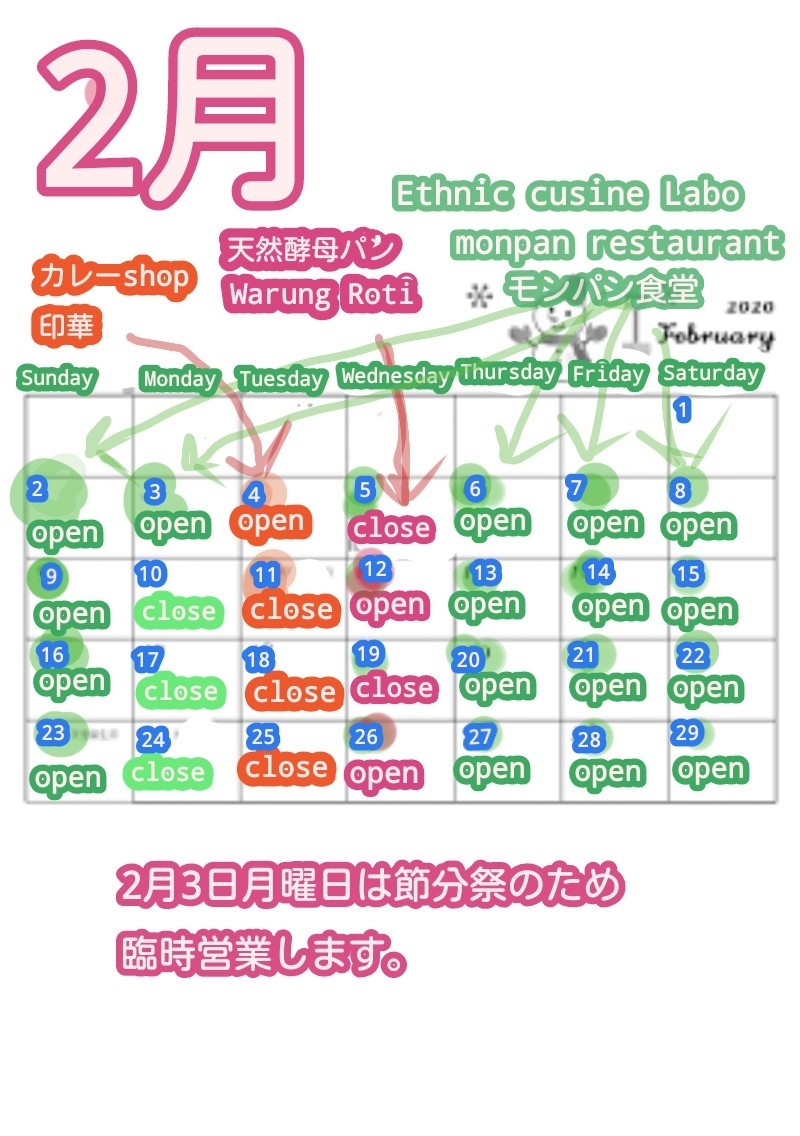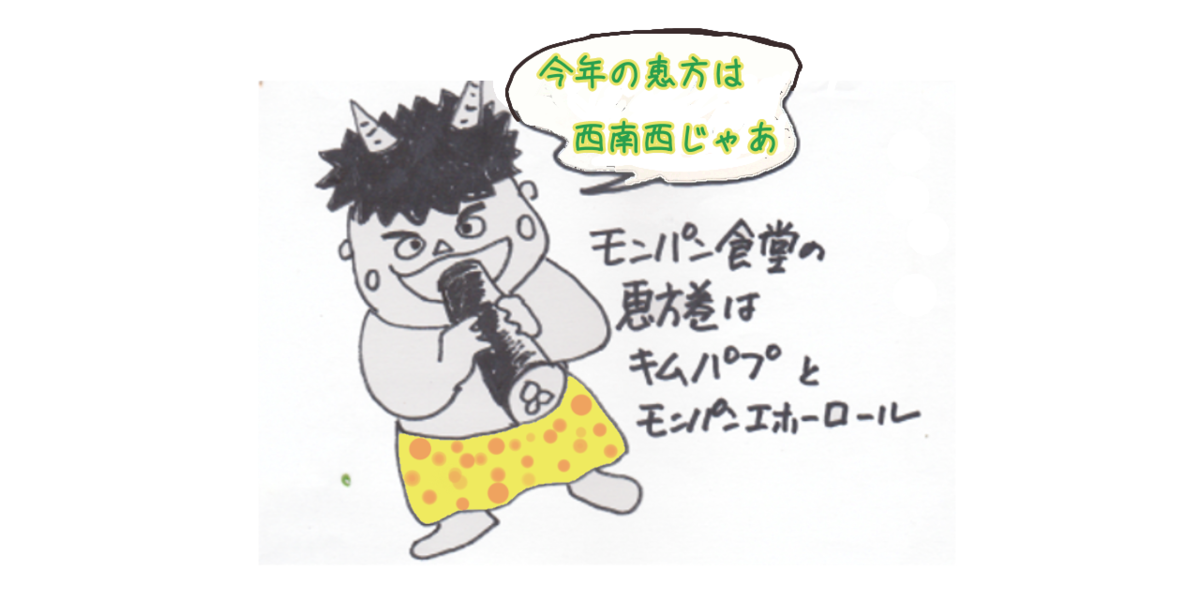牡蠣小屋やってます。2月いっぱいです
Oyster Bar still opens , charcoal grilled
or steamed oysters are available till
the end of February .
2月3日月曜日は吉田神社の節分祭のため臨時営業します。3日月曜日は午後8時までの営業です。
We open the restaurant on February 3rd
temporarily on behalf of the Yosida shrine
Setu bun maturi . We close before 8.

恵方巻きやってます。恵方巻きは2種類
◎キンパ 韓国の海苔巻き
◎モンパンロール
各500円 お持ち帰り出来ます。

We sell two kinds of Eho-maki
1. kimpap Korean style nori roll .
2. Monpan roll rolled Monpan .
Each ¥500
You can take them out.
Cu toms of setubun
What is Eho-maki?
According to the old lunar calendar of Japan, February 3rd is the day before the first day of spring. To ward off illness and misfortune, on this day Japanese families scatter roasted soy beans inside their homes and out of every window and door.
In Japanese, the day is called “Setsubun” which translates as “bean scattering ceremony day”. Traditionally, this is also the day to eat “Eho-maki”.
Eho-maki are thick sushi rolls which is believed to bring good fortune if eaten while facing the year’s “Eho” (good luck direction).
While you eat Eho-maki, you must be silent.
Eho-maki are also called “Maru-kaburi-sushi” (swallowing sushi) because of the traditional way to eat it: make a wish, close your eyes and eat the roll uncut, all while facing the Eho.
The eating of Eho-maki without cutting reflects the idea of forming good relationships.
In 2020 the Eho (good luck direction) is south westsouth.
Some people believe that the origin of Eho-maki is a custom followed at the end of the Edo Period (1860s) in Osaka, of wishing good fortune for fisherman.
It is also believed figuratively that Eho-maki resemble a demon’s metal rod, and that demons can be stopped by eating the whole thing.